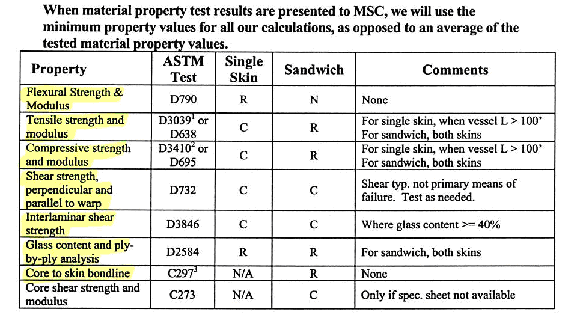Materials Testing for USCG Certified Vessels
One of my customers building my 36’ charter cat in the Ft. Myers area just got hit with an order to do all the testing highlighted in the list below. The price will be almost $4000.
In my experience, one of the surest indicators that your local OCMI is new or knows nothing about composites is if you are ordered to “test everything”. Customer would have been ordered to also do the C273, but I reminded the OCMI that those numbers are already available everywhere.
Old hands know that the most useful tests are those that can be plugged into structural calculations, such as ABS ORY. Those tests are: D790, D638 and D685. In fact many of us could simply from D790 results, tell you what the other test results would be within a few percent. You will not get a D790 result of 60,000 psi and a glass content of 40%.
An argument could be made for a shear test, but on long slender forms like our hulls, shear does not govern. And again, you would not get a great D790 result and a failing interlaminar shear result.
D3846 seems reasonable; if you have never been around modern composites. That test seems to be from the woven roving era. Any moderately well done hand lay-up of knitted fabrics will give around 55% glass content. Vacuum bagged and infused laminates can go even higher.
The C297 test is interesting. It seems reasonable enough. The problem is there is no threshold that I can find to use. What is the target number? ABS doesn’t have one. NVIC 8-87 has no target number. The customer is ordered to pay for a test where nobody can tell what a good or bad result is. Am I the only person amazed at the audacity? 
In these lean times we all have to work smart. Maybe in the flush 90s we could afford to do duplicate work. While the Coast Guard has the power to order builders to do anything, I urge them to use that power wisely to avoid duplication and wasted efforts. Work smart, work lean.
This paper will become a builders guide once I get time. I have gotten the composite structures and testing guru Ron Reichard to agree to work with the USCG on sensible testing policies. It seems so wrong that a local inspector who apparently knows little about composites can bully builders, with no recourse.